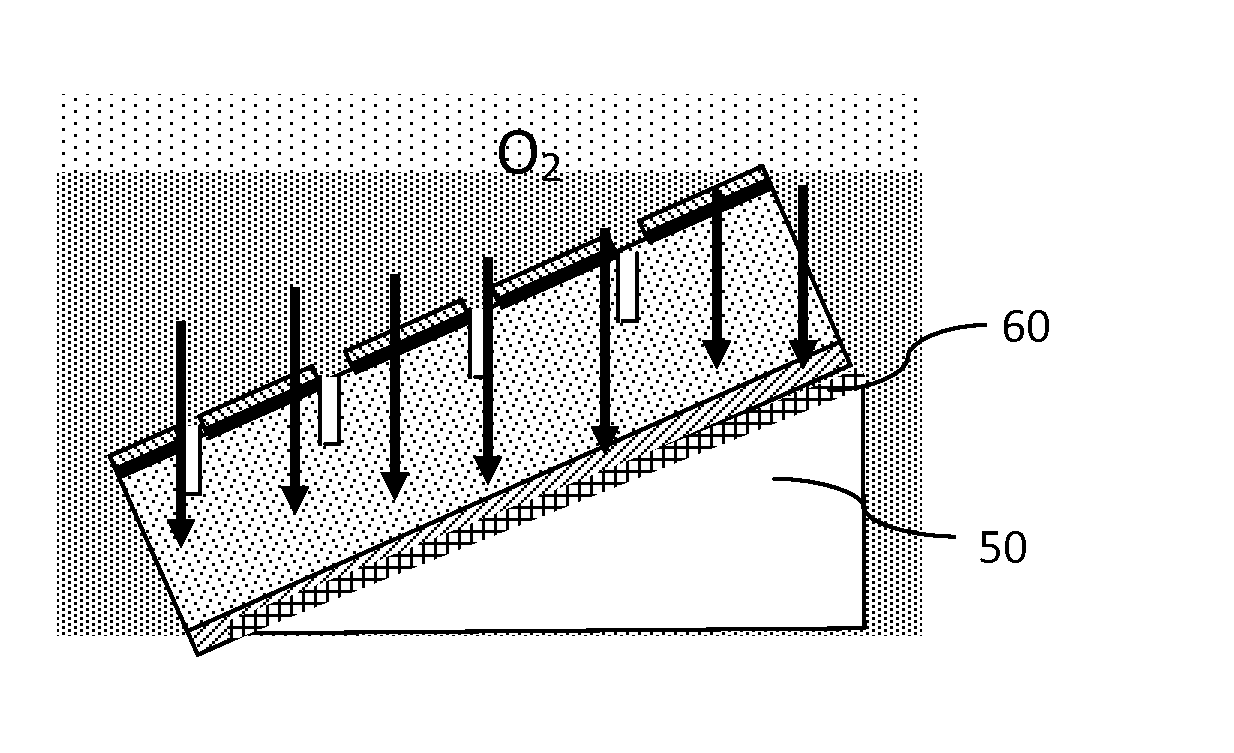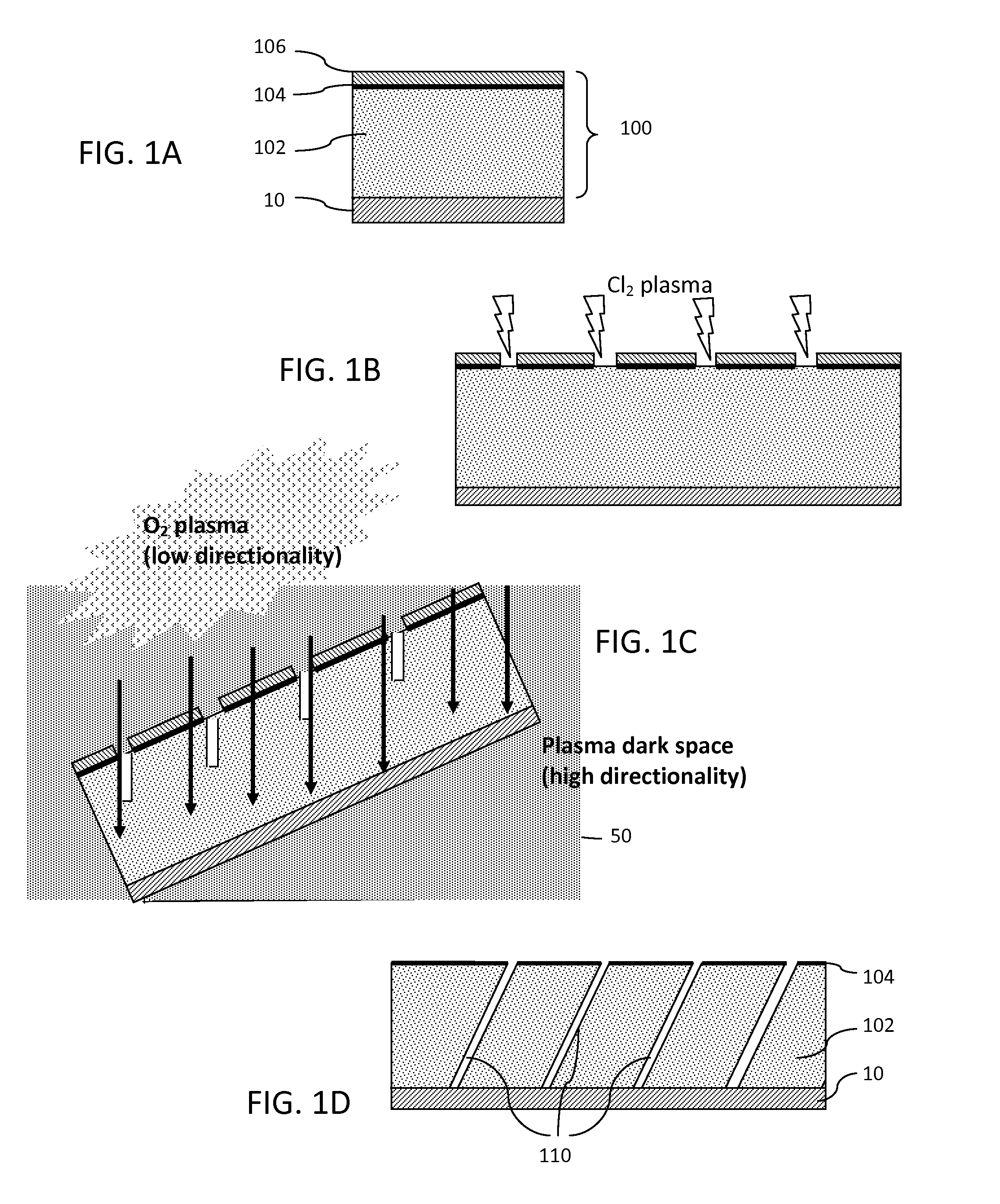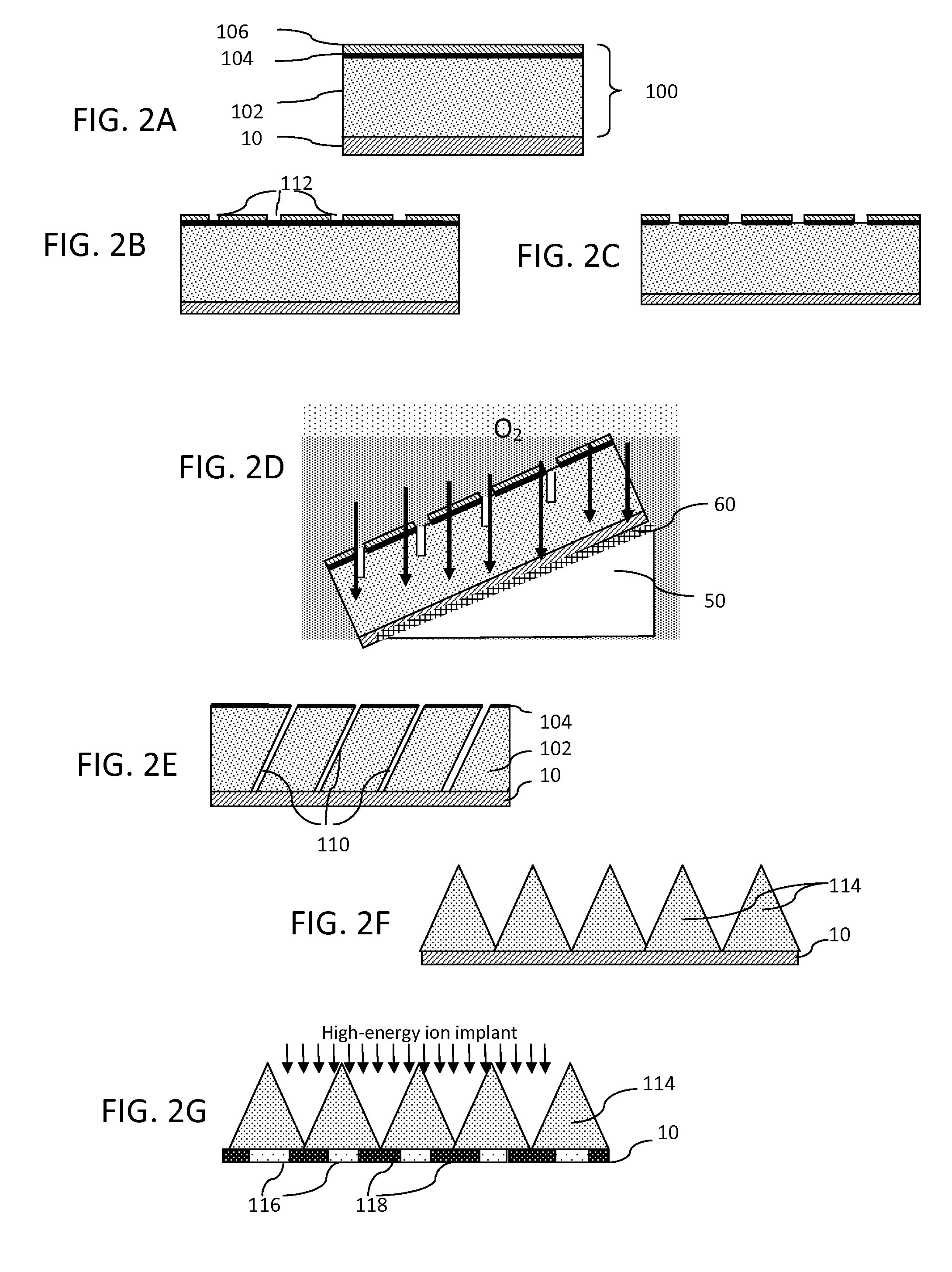Method for fabrication of high aspect ratio trenches and formation of nanoscale features therefrom
a high aspect ratio, feature-forming technology, applied in the direction of photomechanical treatment originals, instruments, photomechanical equipment, etc., can solve the problems of increasing the difficulty and cost of precisely controlling and the inability to precisely control the dopant at the nanoscale level. achieve high-aspect ratio nanometer-scale angled features and high-directional mean free paths
- Summary
- Abstract
- Description
- Claims
- Application Information
AI Technical Summary
Benefits of technology
Problems solved by technology
Method used
Image
Examples
example
Fabrication of SQUID Array
[0050]The inventive process was used for fabricating arrays of nano-superconducting quantum interference devices (SQUIDs) using a high transition temperature (TC) superconducting material such as YBa2Cu3O7-δ (“YBCO”). Substrates consisted of 7×7 mm2 150 nm YBCO files on r-plane sapphire diced from 50.8 mm (2 inch) wafers. The YBCO films are covered by a 15 nm in-situ silver (Ag) film to ensure low contact resistance. In order to allow for robust wire-bonding with good adhesion, an additional 10-nm titanium sticking layer and 200 nm gold layer were sputtered ex-situ. The TC of an unpatterned film has been determined to be approximately 90 K.
[0051]Before patterning of the SQUID array and electrodes, each substrate was stripped of metal at the locations where the SQUID array is to be placed. This step is necessary to ensure that the high-energy ion-radiation used to form the Josephson junctions reaches the YBCO SQUID array without being scattered by the metal ...
PUM
| Property | Measurement | Unit |
|---|---|---|
| degree angle | aaaaa | aaaaa |
| angle | aaaaa | aaaaa |
| thick | aaaaa | aaaaa |
Abstract
Description
Claims
Application Information
 Login to View More
Login to View More - R&D
- Intellectual Property
- Life Sciences
- Materials
- Tech Scout
- Unparalleled Data Quality
- Higher Quality Content
- 60% Fewer Hallucinations
Browse by: Latest US Patents, China's latest patents, Technical Efficacy Thesaurus, Application Domain, Technology Topic, Popular Technical Reports.
© 2025 PatSnap. All rights reserved.Legal|Privacy policy|Modern Slavery Act Transparency Statement|Sitemap|About US| Contact US: help@patsnap.com



